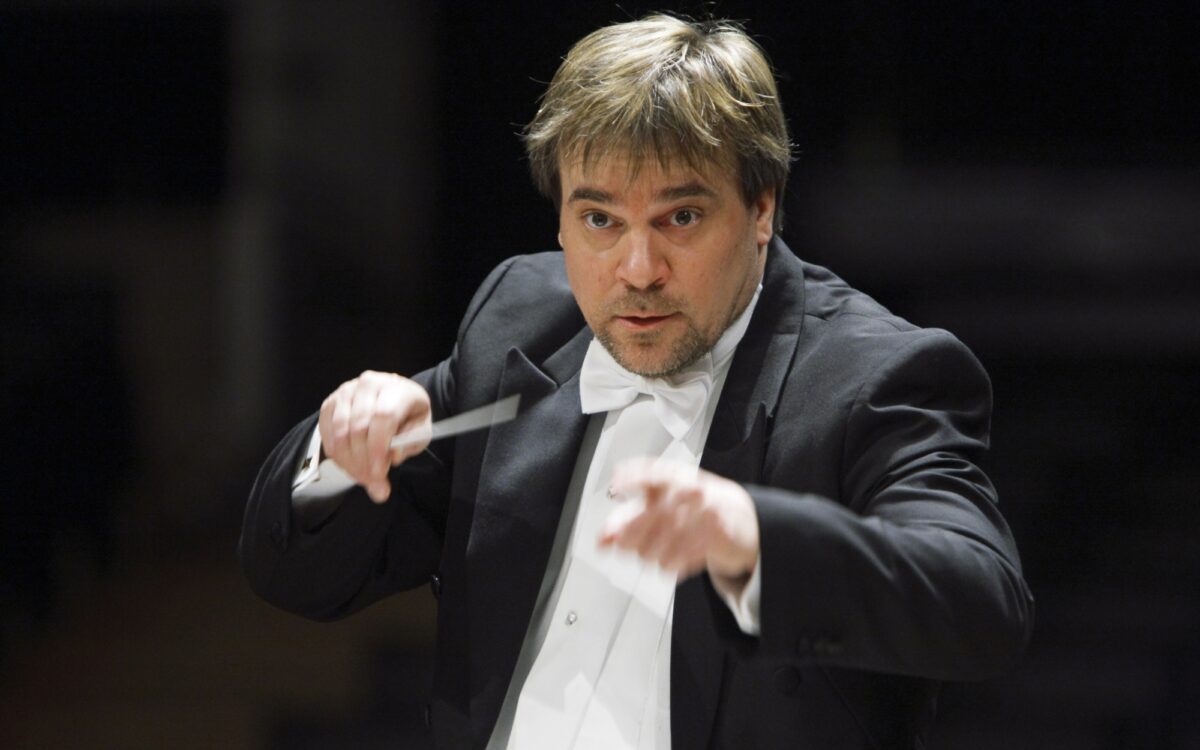The Oceanides
Jean (Johan Julius Christian) Sibelius was born in Hämeenlinna, Finland, on December 8, 1865, and died at Järvenpää, at his country home near Helsinki, on September 20, 1957. He took the Gallicized form of his first name in emulation of an uncle.
Sibelius began Aallottaret (The Oceanides) following his receipt in August 1913, via the American composer Horatio Parker, of a commission from Carl and Ellen Stoeckel for a tone poem to be premiered at the Norfolk Music Festival in Connecticut in June 1914. Sibelius struggled with the piece, writing two other versions (see below) before coming to the final version (provisionally titled Rondeau der Wellen, “Rondo of the Waves”), to which he made changes even as he sailed to America to conduct the premiere. Sibelius renamed the piece Aallottaret (“Ocean Nymphs”), under which title the premiere was given under the composer’s direction on June 4, 1914, by an orchestra composed primarily of musicians from the Metropolitan Opera, New York Philharmonic, and Boston Symphony orchestras. The score of The Oceanides calls for piccolo, 2 flutes, 3 oboes, English horn, 2 clarinet, bass clarinet, 2 bassoons, contrabassoon, 4 horns, 3 trumpets, 3 trombones, timpani, glockenspiel, triangle, 2 harps, and strings (first and second violins, violas, cellos, and double basses). The Oceanides is about 9 minutes long.
While working on several other projects, Sibelius wrote The Bard—his Opus 64—just after completing his Symphony No. 4, Opus 63, the premiere of which he conducted in December 1912 in Helsinki to a somewhat lackluster response. The Fourth Symphony was, in a sense, the beginning of a thorough reconsideration of symphonic form that would ultimately lead through the two versions of the Fifth Symphony, through the Sixth, and culminate in the single-movement Seventh Symphony. These considerations of large-scale, evolving forms for the symphonies were inextricable from Sibelius’s approach to writing his tone poems, whether on the tableau-like scale of The Bard and Oceanides or the broader scope of Tapiola. Character and the details of musical material dictated how the music developed, organically and fluidly, rather than being adapted into pre-existing structural templates like sonata form, which had served composers from Mozart through Mahler.
Even in the tone poems, though, Sibelius frequently spent a long time seeking the appropriate image and, once that image was found, finding its proper musical expression. He kept himself busy by accepting several overlapping projects and juggling ideas; the big piece for the first part of 1913 was music for a Danish ballet commission on the archetypal commedia dell’arte figure Scaramouche. He was dissatisfied with its scenario, however, and meanwhile took on another Finnish-centered work, the Kalevala-based masterpiece Luonnatar for soprano and orchestra, which he completed in late August. This was followed by a commission via an unlikely emissary, the American composer Horatio Parker (1863-1919), the onetime organist of Boston’s Trinity Church and longtime faculty member of Yale University, where his students included Charles Ives.
Having decided to commission a new work for the Norfolk Music Festival in Connecticut for summer 1914, the funders Carl and Ellen Stoeckel asked Parker for recommendations, and he suggested Sibelius. He accepted the commission, which was followed some months later by an offer of further funds to have the composer travel to Connecticut to conduct the premiere and to accept an honorary doctorate from Yale.
Sibelius made substantial progress on two very different versions of the piece that would become The Oceanides before completing the final version. The first piece was conceived as a three-movement suite of which the second and third movements survive. The third introduces the musical ideas that would become the final Oceanides and which are closely related to music in the later Fifth Symphony. In late March 1914, Sibelius completed a version of the tone poem, which he was calling Rondeau der Wellen (“Rondeau of the Waves”), and actually sent the score (now known as the “Yale” version) to Connecticut before rethinking the tone poem further and creating the final version, now called by the Finnish title Aallottaret (“The Ocean Nymphs” or “Oceanides”).
He sailed for America in May. For the June 4 concert in Norfolk, he led an all-Sibelius first half that included Pohjola’s Daughter, music from his King Christian II suite, The Swan of Tuonela, Valse Triste, Finlandia, and the premiere of The Oceanides. Sibelius biographer Andrew Barnett suggests that the event “was perhaps the greatest triumph he would ever experience as a conductor.” Sibelius was mightily pleased with the work itself, writing to his wife Aino, “[I]t’s as though I found myself, and more besides. The Fourth Symphony was the start. But in this piece there is so much more. There are passages in it that drive me crazy. Such poetry.”
Robert Kirzinger
Composer and writer Robert Kirzinger is the BSO’s Director of Program Publications.
The first American performance of The Oceanides was the American premiere on June 4, 1914, at the Norfolk Music Festival in Connecticut.
The first BSO performances of the piece were led by Karl Muck in Boston on January 16-17, 1917.

